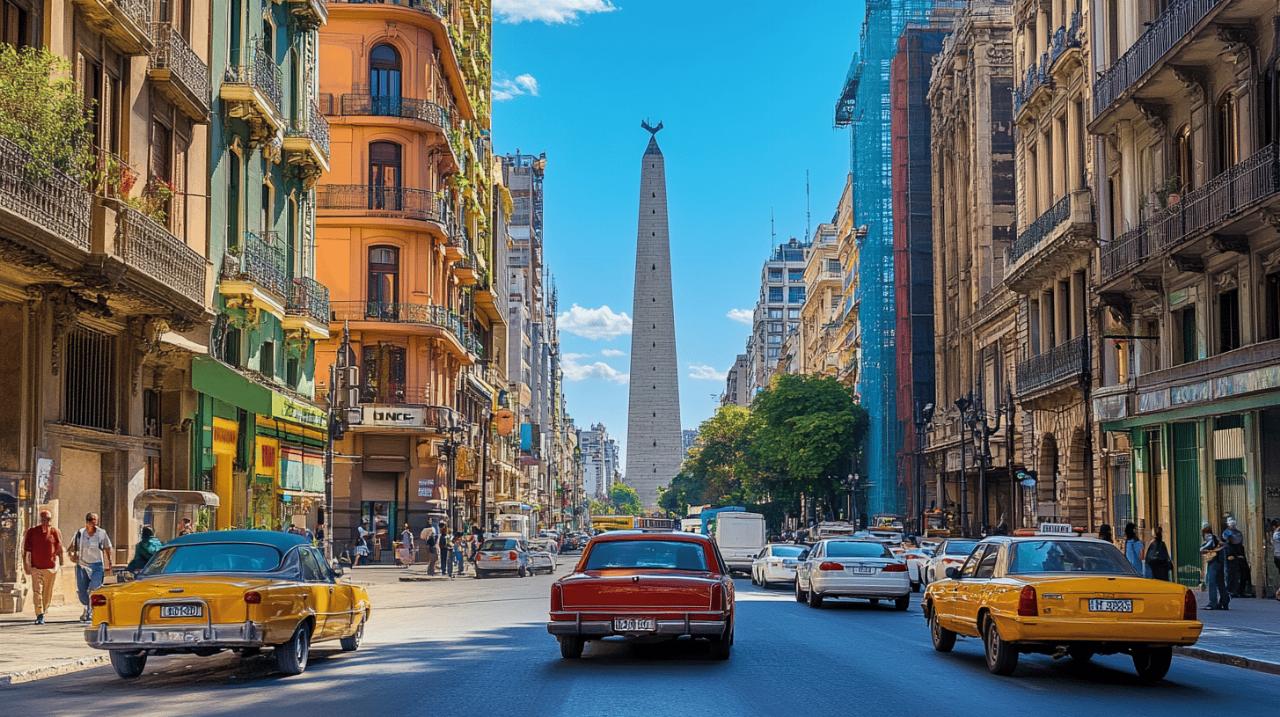Planning to explore the vibrant city of Buenos Aires and its surrounding areas? Renting a car gives you the freedom to discover Argentina at your own pace. However, navigating the car rental process in a foreign country can be daunting. This comprehensive guide will help you avoid common pitfalls and ensure a smooth driving experience in the Argentine capital.
Preparing for your car rental
Before setting foot in Buenos Aires, proper preparation is essential for a hassle-free car rental experience. Understanding the documentation requirements and researching reliable companies will save you time and potential headaches. Many travellers find useful information about car rentals on dedicated automotive websites like https://www.kammann-automobile.de/, which provides valuable insights about vehicles and transportation options worldwide.
Understanding driving licence requirements
Argentine car rental companies typically require a valid driving licence in Latin alphabet. If your licence uses a different alphabet, you’ll need an International Driving Permit (IDP). While some sources suggest you can rent with just your national licence, it’s legally required to have an international permit, so obtaining one before your trip is advisable. Most rental agencies require drivers to be at least 21 years old, though many prefer renters to be 25 or older. Younger drivers may face additional fees. Along with your licence, you’ll need a passport for identification and a credit card in the driver’s name for the security deposit.
Researching reliable rental companies
Buenos Aires offers numerous car rental options, including international firms like Hertz, Avis, Enterprise, and Alamo, as well as local companies such as Localiza, Omega, and Rentacar. Each company has its own strengths – Hertz boasts over 30 years of experience in Argentina and offers extras like baby seats and Wi-Fi, while Sixt specialises in premium vehicles. Localiza provides a diverse fleet featuring brands like Renault, Toyota, and Chevrolet. To find the best deal, use comparison sites like DiscoverCars, which many travellers recommend for competitive rates. Booking online in advance typically secures better prices and ensures English-language service.
Vehicle inspection and insurance
Taking the time to thoroughly inspect your rental vehicle and understanding your insurance coverage are crucial steps that many travellers overlook. These precautions can save you from unexpected charges and disputes when returning the car.
Conducting a thorough pre-rental inspection
Before driving away, carefully examine the rental vehicle for any existing damage. Check the exterior for scratches, dents, or paint chips. Inspect the interior, including upholstery, controls, and electronics. Test all features, from indicators to air conditioning. Most importantly, document all findings with photos or video, noting them on the rental agreement. Pay attention to the tyres, windows, and mirrors as well. This thorough inspection protects you from being held responsible for pre-existing damage upon return. Additionally, verify that the vehicle contains all required safety equipment, including a spare tyre and tools, as Argentine roads can be challenging in rural areas.
Choosing the right insurance coverage
While rental companies must provide basic insurance, this minimal coverage often comes with high excess amounts. Consider purchasing additional protection to reduce your liability. Comprehensive insurance should include third-party liability, collision damage waiver (CDW), and theft protection. For complete peace of mind, zero-excess insurance eliminates financial responsibility in case of damage. Insurance is particularly important in Argentina due to varying driving styles, potential for break-ins, and rocky roads that can damage vehicles. When comparing insurance options, ask about coverage limits, exclusions, and the claims process in case of an accident.
Navigating buenos aires traffic rules
Understanding local driving regulations is essential for safely navigating the streets of Buenos Aires and avoiding fines. The city’s traffic can be challenging, especially for first-time visitors.
Learning local road regulations
In Argentina, vehicles drive on the right-hand side of the road, and seatbelts are mandatory for all passengers. Headlights must be on when driving on highways, even during daylight hours. Speed limits vary: 40-60 km/h in urban areas, 80-110 km/h on rural roads, and 120-130 km/h on motorways. In residential zones, limits drop to 20-40 km/h. The legal blood alcohol limit is 0.05%, lower than in many countries, so consider avoiding alcohol completely if you plan to drive. Using mobile phones while driving is prohibited unless you have a hands-free system. When encountering emergency vehicles with sirens, you must yield the right of way. Traffic in Buenos Aires can be congested, particularly during rush hours from 7:30-10:00 AM and 5:00-8:00 PM, so plan your journeys accordingly.
Understanding Parking Policies in the City
Parking in Buenos Aires presents challenges, especially in the city centre. The city employs a colour-coded system: blue zones require payment, green zones are typically free, and red zones prohibit parking entirely. When using street parking in blue zones, you can pay using apps like Blinkay. Be aware of ‘trapitos’ – unofficial car minders who may approach you for payment to ‘watch’ your vehicle. While these individuals have no official authority, some travellers choose to pay a small fee for peace of mind. For secure parking, numerous private car parks (called ‘playas de estacionamiento’) operate throughout the city, though they charge higher rates than street parking. Always display your parking receipt visibly to avoid fines, and never leave valuables visible in your parked vehicle.
Avoiding common pitfalls
Awareness of potential scams and maintaining proper documentation can save you considerable trouble during your car rental experience in Buenos Aires.
Recognising potential rental scams
To avoid rental scams, only use reputable companies with established physical locations. Be wary of deals that seem too good to be true, as they often conceal hidden charges. Common scams include falsely claiming damage that existed before your rental, adding unrequested ‘extras’ to your bill, or applying excessive charges for minor issues. Read all contracts carefully before signing, and if possible, have an English translation if you’re not fluent in Spanish. Some companies might try to pressure you into purchasing unnecessary insurance or upgrades. Stand firm and refer to your online booking confirmation if rates suddenly increase. When paying, use credit cards rather than cash, as they provide better consumer protection and documentation of transactions.
Managing essential documentation
Keep all rental documentation organised and accessible throughout your trip. This includes your rental agreement, insurance papers, payment receipts, and the contact information for your rental company. Make digital copies of these documents and store them in a secure cloud service as backup. If you plan to cross borders into neighbouring countries like Chile or Uruguay, inform your rental company in advance to obtain necessary authorisation documents, as crossing without proper paperwork can result in significant penalties. Some border crossings may incur additional fees. Your documentation should also include emergency contact numbers for roadside assistance, which is essential when travelling in remote areas of Argentina where mobile coverage may be limited.
Planning your journey effectively
Proper route planning and knowing how to handle unexpected situations will enhance your driving experience in and around Buenos Aires.
Mapping routes and considering traffic patterns
While Buenos Aires itself has excellent public transportation, making car rental unnecessary within the city, a vehicle is ideal for exploring the surrounding Pampas region and beyond. Popular destinations accessible by car include Tigre and the Paraná Delta, the gaucho town of San Antonio de Areco, the coastal city of Mar del Plata, and Mendoza’s wine routes. When planning routes, use reliable navigation apps or GPS systems that work offline, as mobile coverage can be spotty in rural areas. Consider the vehicle type for your journey – a standard car suits most trips, but rough terrain in northern Argentina or Patagonia may require a 4×4. Many highways have tolls, so keep cash or a pre-paid toll card handy. Avoid driving at night, particularly in rural areas, due to poor lighting and the risk of animals crossing the road.
Addressing vehicle issues and accidents
In case of a breakdown, contact your rental company’s roadside assistance immediately. Know how to change a tyre, as punctures are common on rural roads. If involved in an accident, exchange details with other parties, take photos of all vehicles and the scene, and contact both the rental company and insurance provider promptly. File a police report for insurance purposes, even for minor incidents. If approached by police officers requesting on-the-spot payments, politely ask for a written fine instead, as legitimate traffic violations are processed through official channels. For medical emergencies, dial 107. Having a basic emergency kit in your vehicle is advisable, including a first aid kit, torch, and water, particularly when travelling to remote areas where assistance may be delayed.
Returning your rental vehicle
Proper procedures when returning your rental car can prevent disputes and additional charges.
Following proper fuel protocols
Most rental agreements in Argentina operate on a ‘full-to-full’ policy, meaning you receive the car with a full tank and must return it the same way. Failing to refill the tank typically results in refuelling charges at inflated rates. Keep your final fuel receipt as proof of compliance. As of early 2025, petrol prices were approximately ARS$1,258 per litre (around US$1.20), though rates fluctuate regularly. Ensure you use the correct fuel type specified in your rental agreement – using the wrong fuel can cause serious engine damage not covered by insurance. Gas stations are abundant in urban areas but can be scarce in remote regions, so plan refuelling stops accordingly when travelling long distances. Some premium rental companies offer a pre-purchase fuel option, which might be convenient but typically costs more than refuelling yourself.
Completing the return process smoothly
Allow ample time for the return process, particularly at busy locations like airports. Aim to arrive at least 30 minutes before your scheduled return time. Before returning the vehicle, remove all personal belongings and briefly clean the interior. The rental agent will inspect the car for new damage, so request to be present during this inspection. If returning outside business hours, follow the company’s after-hours procedure carefully and document the car’s condition with photos. Keep all return documentation until your credit card has been cleared of any holds or deposits. If you’ve encountered any issues with the vehicle during your rental period, report them clearly during the return process to avoid misunderstandings. Finally, request a final receipt confirming the return was completed satisfactorily with no outstanding charges.

